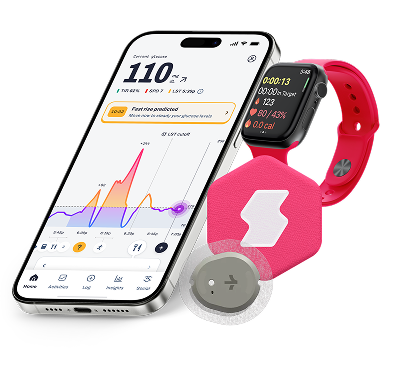Radishes, commonly featured in salads and dishes as a crunchy garnish, often take a back seat to more prominent vegetables when it comes to discussions about glycemic impact. However, these root vegetables boast an array of health benefits that extend beyond their conventional culinary role. Rich in nutrients like vitamin C, potassium, and fiber, radishes may contribute to improved digestion and heart health.¹ Furthermore, their low glycemic index makes them a potentially favorable addition to the diets of individuals managing blood sugar levels, particularly those with diabetes.
In this article, we'll explore the often-overlooked potential of radishes in promoting stable blood sugar levels and overall well-being, shedding light on the unique advantages of incorporating this versatile vegetable into your diet.
Sign up to be the first to know about special offers and exciting Signos news.
Glycemic Index Table
The nutritional content of radishes per 100g serving includes a glycemic index of approximately 15, indicating a minimal impact on blood sugar levels.² With a carbohydrate content of 3.4g per 100g serving, radishes are considered a low-carb vegetable, making them an ideal choice for those aiming to manage their carbohydrate intake.¹ The glycemic load per serving, calculated by multiplying the glycemic index by the amount of carbohydrates and dividing by 100, is an exceptionally low 0.51, emphasizing the minimal effect of radishes on blood glucose levels.
The glycemic index (GI) measures how quickly a particular food raises blood sugar levels. Foods with a low GI (55 or less) are digested and absorbed more slowly, resulting in a slower and smaller rise in blood sugar levels. Cooking radishes does not significantly affect their glycemic index, as they are commonly consumed raw, although roasting or boiling might slightly increase the GI due to the breakdown of fiber.
These statistics underline the potential benefits of incorporating radishes into diets, particularly for individuals seeking to manage blood sugar levels and overall carbohydrate intake.

Nutritional Facts
Radishes are a low-calorie vegetable, rich in nutrients that contribute to overall well-being. A 100-gram serving of radishes contains approximately 16 calories, 3.4 grams of carbohydrates, and 1.6 grams of dietary fiber, making them a suitable choice for individuals aiming to maintain a balanced diet.¹ Additionally, radishes are known for their notable content of vitamins C and B6, potassium, and other essential minerals, which collectively support immune function, heart health, and digestion.
The nutritional information below is for 100 g of radishes.¹
Nutritional Facts

Is Radish Good for Weight Loss?
Radishes can be a valuable addition to weight loss diets due to their low calorie and high water content, making them a satisfying and hydrating food choice. With approximately 16 calories per 100-gram serving and a significant fiber content of 1.6 grams, radishes can promote a feeling of fullness, potentially reducing overall calorie intake and aiding in weight management.
Additionally, their natural peppery flavor can add zest to dishes without the need for calorie-dense condiments, making them an excellent option for those aiming to maintain a calorie-controlled diet. Integrating radishes into a well-balanced and varied diet, alongside regular exercise, can contribute to a sustainable and effective weight loss regimen.
Is Radish Safe for People Living with Diabetes?
Radishes can be a beneficial addition to the diets of individuals with diabetes due to their low glycemic index and minimal impact on blood sugar levels. With only 3.4 grams of carbohydrates per 100-gram serving, radishes can be incorporated into balanced meal plans for people with diabetes, aiding in managing blood sugar fluctuations.¹
Furthermore, their high fiber content may contribute to improved blood sugar control and overall digestive health, supporting individuals in maintaining stable glucose levels. However, it is crucial for diabetics to monitor their overall carbohydrate intake and consult with healthcare providers to ensure radishes fit into their individualized dietary plans.
Better health starts here.
Sign up for tips and insights that work for you!
Allergies
While radishes are generally considered safe for consumption, allergic reactions to radishes, though rare, have been reported. Symptoms of radish allergies may include itching, swelling, or hives, and in severe cases, anaphylaxis. Those with known allergies to cruciferous vegetables, such as broccoli or cabbage, may be more susceptible to radish allergies. It's essential for individuals with a history of food allergies or sensitivities to monitor their reactions closely when introducing radishes into their diet and consult with a healthcare professional if any adverse symptoms occur.

References
References
- USDA FoodData Central. (2019, April 1). Food Details - Radishes, raw. https://fdc.nal.usda.gov/fdc-app.html#/food-details/169276/nutrients
- The University of Sydney. (2023, May 1). Glycemic Index – Glycemic Index Research and GI News. https://glycemicindex.com/




.svg)
.svg)
.svg)
.svg)
.svg)
.svg)
.svg)
.svg)
